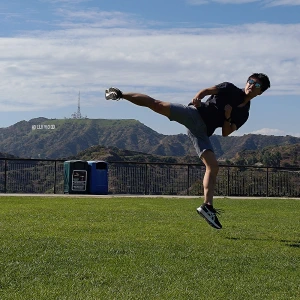Posted
on
in
Baltic Cruise and Northern Europe
• 701 words
• 4 minute read
Tags:
England, London
Today we went to the reconstruction of the Globe Theatre and then to the science museum, but I’m getting ahead of myself. I’ll start with the Globe Theatre.
I’ll start by describing some of the things I learned about the Globe Theatre. The area around the Globe had a long theatrical tradition even before the Globe was built. There were theatres in the area when the original Globe was built according to Shakespeare’s design in 1599 (source of date: Wikipedia). The Globe burned down a few times because of its thatch roof and wooden construction. It lay in ruins for hundreds of years until a reconstruction was made in the late 1900s. The reconstruction used the same materials and construction techniques as the original and is actually the only building in London with a thatched roof.
The Globe is a circular theatre with roofs over the outside seats. The theatre can hold 3000 people, 700 of which are packed on the floor right next to the stage. It is open air in the middle to take advantage of the natural light (instead of using expensive and dangerous candles).
We started by going to the museum where there were displays about the history of the theatre. Then we went to do the guided tour. The lady doing the tour explained some of the history of the Globe as well (some of which I described above). Then she took us into the theatre itself. An actress was practising her lines with what appeared to be her voice coach. Even today the actors don’t use any microphones, and during the daytime performances, no artificial lights are used (the nighttime performances are lit up with artificial lights though, however they light up the audience as well as the stage and everyone can be seen). The acoustics were amazing. We could hear the lady’s voice even when she was speaking rather softly.
We then went to the London Science Museum. It is a very overwhelming, but interesting, museum.
We began by grabbing something to eat at the Energy Cafè. Then we went to an exhibit about Churchill’s Scientists. It was mainly about the development of radar before and during WWII. It described the first test of radar. The scientist who postulated the viability of radar had an RAF pilot fly over the BBC broadcasting station and used his radar prototype to detect the plane. The exhibit also talked about Churchill’s views on the nuclear arms race. Churchill recognized the danger of a nuclear arms race and objected to Britain becoming a nuclear power.
We then went to an exhibit on space. There were models of rockets and engines thereof. They had a model of the Goddard rocket, the first liquid fuel rocket and they had one of the rocket engines from a Saturn V rocket. They also had a full scale model of the lunar lander.
Then we went to an exhibit called The Making of the Modern World. Basically it was about the development of technology from the 1800s into the middle of the 1900s.
Next we went to an exhibit about the Information Age. There were six sections about different aspects of Information Technology. They had a really good explanation of Internet packet transfer, one of the best I’ve seen. They also had displays about radio and television. They had some really old mainframe computers and even an Apple 1. I really can’t even begin to describe the extent of this room, there were so many items.
The next room we went to was about flight. There were a bunch of aeroplanes from a full scale model of the Wright Brother’s Flyer to a cross section of a Boeing 747.
We then went to an exhibit on various clocks. I was so tired at this point that I basically walked through saying “oh that’s a clock, that’s another clock, done”.
Since we leave London tomorrow, we went back to the apartment a bit earlier than normal to have some time to pack up. We head to Reykjavik, Iceland tomorrow where we will stay for a day and a half. (Dad is staying in London for two days and then flying to Ghana for work.)
